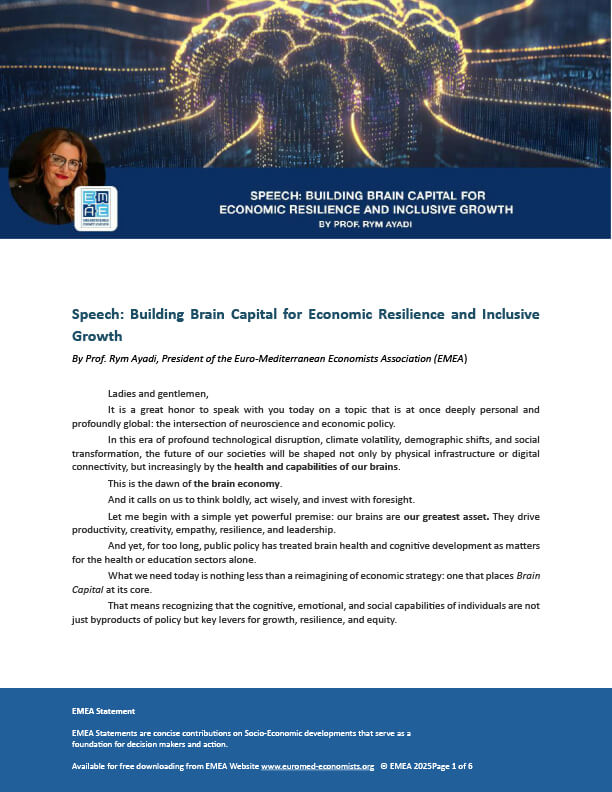Governments worldwide are in a race against time to work out how to adequately finance the increasingly elderly global population, according to one of the most respected ratings agencies.
The latest S&P report into global ageing declared that “rising age-related expenditure could become unsustainable for several sovereigns, amid declining fertility rates, rising interest levels and steep government debt.”
Entitled, “Global Ageing 2023: The Clock Ticks” and based on a 2025 simulated starting point, S&P’s key findings revealed:
- If age related spending isn’t cut, by 2060 in advanced economies it will rise to 101% of GDP and to 156% of GDP in emerging economies.
- Without any change to existing policies, in over half of the 81 sovereigns analysed, their credit ratings would be no better than speculative grade (BB+ or below).
- Structural reform implementation has declined against a worsening demographic outlook – pointing towards unsustainable age-related expenditure for some sovereigns.
- Old age dependency ratios and related expenditure are steepest in emerging economies, meaning policy adjustment is more urgent amongst less well-off nations.
In assessing “the potential credit implications of ageing for sovereign states” in the seven years since publishing “Global Ageing 2016: 58 Shades of Grey”, S&P said there had been extensive Government intervention “to soften the fall-out” from a series of global shocks – like the Covid pandemic and the Ukraine war.
At the same time, fertility rates had continued to decline worldwide, worsening the majority of demographic profiles, “most acutely” amongst middle-income emerging sovereigns.
“Frequent electoral cycles and a plethora of global economic emergencies have diminished most governments’ capacity to focus on the long term, even as central banks’ ability and willingness to use their own balance sheets to soften shocks is elapsing,” said the report.
The resulting pressures on public finances – whether from high government debt or rising interest rates – had led many governments to focus on the near term, delaying “contentious pension reforms until the distant future.”
Yet “the scale of the ongoing demographic transition and its likely manifold effects on societies, risks becoming unmanageable if left ignored.”
Three Potential Pathways
One of S&P’s core assumptions – rarely tested at elevated debt-to-GDP ratios – was that governments would prioritise servicing bonded debt over other fiscal promises, including pension liabilities. And they outlined “three pathways” that governments could take “in the face of rising demographic pressures:
- Implement pension and other age-related reforms to combat age-related expenditure and age-dependency ratios.
- Introduce other offsetting fiscal measures, e.g., raising taxes and spending less on non-age-related items.
- Maintain consistently higher deficits and delay targeted action.
S&P believed “procrastinating governments” would be drawn to the latter of these options.
They did, however, hint at some positive news for advanced economy sovereigns, in that from 2025, they expected improved budget balances relative to their 2016 assessment. This would mean that “a larger number of advanced sovereigns should be able to retain their investment-grade status.”
In contrast, their simulation was based on most public finances remaining in “autopilot mode”, which suggested that the average emerging market sovereign would be less likely to retain investment-grade ratings.
Higher projected increases in age-related spending in the long-term would “significantly affect emerging market sovereigns’ long-term creditworthiness prospects.”
For both advanced and emerging market economies, taking “decisive action” to stabilise escalating age-related expenditure “would pay a steady dividend over many years to come, in the form of healthier public finances and lower associated amounts spent on debt financing.”
Delaying difficult reforms could push public debt to unsustainable levels in a number of rated sovereigns and drive governments to abruptly cut real spending outlays for households, the report warned.
Although S&P weren’t expecting “such a widespread, calamitous outcome”, there was the possibility that the costs of fiscal and political transition could increase if left unaddressed.
Steep demographically driven deterioration
Although S&P predicted that long-term debt simulations for sovereigns would be lower than in 2016, the latest report intimated that most countries would experience “a steep, demographically driven deterioration in public finances in the absence of adjustments in social safety net costs, combined with policies that boost growth.”
If nations took no further measures to plan for ageing populations, the financial burden on most sovereigns would steadily increase, “leading to deteriorating fiscal indicators from about the mid-2020s and an accelerating worsening, particularly from the mid-2030s, with significant differences amongst sovereigns.”
Taking into account anticipated future budgetary imbalances and projected economic growth dynamics, S&P calculated “that about half of the 81 sovereigns we have analysed, would have credit metrics that we currently associate with speculative-grade sovereign ratings.”
Their simulation predicted that the worsening in overall creditworthiness would lead to a rise in speculative-grade ratings, particularly from the 2050s.
The projections showed, however, that the average advanced sovereign would generally retain investment-grade ratings throughout the period, due to improved budget balances. On the other hand, emerging market sovereigns would be less likely to retain investment-grade ratings. This was despite developing countries’ relatively higher long-term economic growth prospects and a healthier starting position in terms of age-dependency ratios and age-related expenditure.
Worsening old-age dependency ratio
S&P expected that the old-age dependency ratio would “worsen in every country covered, with no exceptions.”
In most cases, demographers expected the ratio would actually double by 2060, particularly affecting Eastern Asia and most of Europe. Demographic shifts throughout Latin America and Western Asia also “looked to be significant.” Current systems in these two regions were not “appropriately calibrated” to support the elderly and would “require potentially politically unpopular adjustments.”
At the other end of the spectrum, demographic projections suggested that sub-Saharan Africa was expected to remain young up to the 2060 timeline “with a plausibly manageable demographic shift over this period.”
Based on age-dependency ratios, the “oldest countries in the world” in 2060 would predominantly be countries in East Asia, such as Japan, South Korea and Hong Kong. Saudi Arabia, Oman and Qatar also needed “close watching.”
In their accompanying spotlight, “The Challenges of ageing: Fast and slow”, S&P emphasised the need for governments to take action to address the consequences of demographic shifts – described as heterogenous across countries – in the coming decades, resulting from falling birth rates and longer life spans. Decisive and timely policy action would help them “cap the fiscal risk.”
Whilst populations were becoming older in all the 80 rated countries analysed, the intensity of demographic shift was uneven – with 18 countries identified as having an elderly population relative to the working-age population (the old-age dependency ratio) that would have increased by at least 50% by 2035.
The demographic shift would be most significant in five East and Southeast Asian economies — Hong Kong, South Korea, Singapore, Thailand and mainland China – and least likely in sub-Saharan Africa.
GDP would come under pressure from shrinking labour forces. In order to maintain current growth rates, this would need to be offset by the widespread adoption of AI technologies, as an example – even though such transformative technological changes hadn’t historically created “a persistent change in productivity growth.”
Massive regional variations
The most acute budgetary pressures were on pension outlay, whilst healthcare and long-term care spending was becoming increasingly important. There were massive variations across regions; western and northern European countries spent an average 19.1% of GDP in 2022, compared with just 2.3% of GDP in sub-Saharan Africa.
Regarding age-related spending “advanced economies are already significantly more burdened than the rest of the world.” The greatest spending pressures were on countries “challenged by a faster demographic shift.”
In the most intensely pressed countries like China, South Korea and Thailand, family was a key provider of long-term care, with “the largest part of related responsibilities” falling on women. As female labour participation increased, “pressures for institutionalised support will likely trigger additional demand for government spending.”
Whilst advanced economies would be able to cope with age related spending, “emerging market economies will be under increasing budgetary pressure from their ageing societies.” Significant numbers of people would grow old before they became rich. Labour force shrinkage “could undermine emerging markets’ aspirations to achieve higher-income status.”
The S&P report further highlighted:
- Increasing budgetary pressures for governments in Colombia and Chile due to shifting demographics.
- Gulf countries would start experiencing ageing pressure if generous state benefits continued, becoming especially serious after 2035.
European governments would be likely to remain the world’s top spenders on age-related items. Nevertheless, generous state-led social security systems, together with universal government-provided healthcare, would leave the regional governments structurally exposed to their populations’ demographic shifts.
Ageing Greece was projected to see a decline in age-related expenditure by 2035, reflecting significant structural reform that had reduced benefits, including pensions. Meanwhile countries, such as Romania and Slovenia, had taken “insufficient action to fully shield public finances from their worsening demographic profiles and further reforms are warranted.”
Encouraging re-employment
In order to offset deteriorating demographics, Japan – the world’s oldest country – had undertaken “active efforts to boost employment rates amongst older groups.”
The country stood out “for being head-and-shoulders above all other countries in terms of demographic transition”, with 29.2% of the population being over 65, with a further 1 in 10 over 80.
This “skew of the population” had been partially offset over the past decade by increasing employment rates across older age groups. Japan had done this by extending retirement ages, encouraging re-employment amongst the older population and improving female labour market participation.
“Given the growing urgency of tackling the budgetary implications of population ageing” S&P said decisive and timely policy action could help contain risks to long-term sustainability of public finances. Governments could deal with future imbalances by:
- Instigating structural reforms to increase employment levels amongst older workers, potentially expanding economic growth.
- Front-loading a sustained budgetary consolidation
- Implementing substantial reforms to social security and publicly funded healthcare systems, beyond current government initiatives
S&P reckoned that the latter two options would be the most realistic in the near term.
Although migration could “cushion the budgetary impact of population ageing”, migrant numbers alone would not be sufficient to compensate for population decline. Whilst the migrant workforce would initially contribute to growth and social security revenues, as they reached retirement age “it burdens the budget in the same way as the host population.” Over time, the migrant population’s fertility patterns would also adapt to the host country.
Spreading the impact of unpopular policy measures
Despite significant progress having been made in reforming social security systems, especially amongst advanced sovereigns, “many potential political stumbling blocks remain” with total age-related spending already representing over 55% of a government’s total primary spending. By implication, this would be an important part of any government’s budgetary strategy, especially taking into account reductions in budget deficits after recent economic shocks.
If embraced early, rationalising public pension and healthcare systems could “help spread the impact of such unpopular policy measures over an extended period,” said the report.
Nevertheless, whilst there was a requirement to reduce poverty by ensuring adequate social transfers, S&P noted that ongoing demographic shifts would affect electorate age structure. This “could make the political climate for pension and healthcare reform more difficult.”
For emerging market sovereigns, population ageing would also be likely to occur against a backdrop of relatively high rates of economic growth.
But even if governments of less advanced economies had the advantage of more time to figure out their policy options, they still needed to design fiscally sustainable programmes for their ageing populations.
S&P concluded: “Our analysis suggests that the need to tackle the outstanding challenges is as pressing for many emerging market sovereigns as it is for the sovereigns in advanced economies.”
Executive Summary: Global Aging 2023 | S&P Global Ratings (spglobal.com)
The challenges of aging: Fast and slow | S&P Global (spglobal.com)





